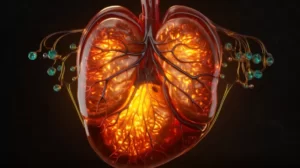You go to the doctor seeking answers to your health concerns, but how often do you consider the possibility of being misdiagnosed? It’s a serious issue, with more than 32,000 patients facing this problem every hour of the day. According to a study from the Veterans Affairs Center for Innovations in Quality, Effectiveness and Safety, there is a significant likelihood that your doctor may misdiagnose your health issue, leading to potential complications or mismanagement of a potentially life-threatening condition.
This issue affects one in twenty Americans, a surprising statistic for what ultimately could have dire consequences. So, how can we protect ourselves from the threat of misdiagnosis while seeking medical care?
####Understanding the Causes of Misdiagnosis
Before we tackle prevention, it’s crucial to understand why misdiagnosis occurs in the first place. Doctors are often rushed, facing pressures to move patients in and out of their offices quickly and juggle a heavy workload. This hasty approach to patient care can lead to errors, as there isn’t enough time dedicated to accurately assess an individual’s health in many cases.
Additionally, some conditions may present with non-specific symptoms, making it difficult to immediately pinpoint the underlying issue. In cases where doctors must rely on patient-reported symptoms, a lack of clarity from the patient or even a misunderstanding between both parties can contribute to a misdiagnosis.
####Preventing Misdiagnosis Through Communication
One of the best ways to avoid misdiagnosis is by being proactive in your communication with your healthcare provider. Here are a few ways you can ensure clear and effective communication:
- Keep a symptom journal. Track how you feel, when symptoms occur, and any potential triggers to help your doctor gain a clearer understanding of your health concerns. Be sure to bring it with you during your appointment.
- Ask questions. Don’t be afraid to inquire about your diagnosis, treatment options, and any additional information you need to fully understand your health situation. This not only encourages further discussion but also helps your doctor think critically about your case.
-
Be honest and thorough. It’s crucial to provide your healthcare provider with a complete picture of your symptoms and medical history. Disclosing even seemingly unrelated information could help them make a more accurate diagnosis.
####Seeking a Second Opinion
If you’re unsure about the initial diagnosis you receive, it’s always a good idea to seek a second opinion from another qualified healthcare professional, especially for more severe or complex conditions. This can provide an additional layer of protection against misdiagnosis and contribute to your peace of mind.
####Technology and Its Impact on Misdiagnosis
Advancements in technology and medical testing have improved diagnostic accuracy in many cases. However, it’s important to note that technology is not infallible, and relying heavily on it as the primary means of diagnosis can still result in misdiagnoses.
Incorporating a more holistic approach to patient care that leverages technology alongside in-depth patient assessments and increased attention to detail is essential to reducing misdiagnoses.
####Empowering Patients to Be Proactive in Their Healthcare
Ultimately, one of the most effective ways to combat misdiagnosis is by empowering patients to be proactive in their healthcare journey. This means fostering open communication, promoting education about one’s own health, and encouraging individuals to ask questions and seek multiple opinions as needed.
It’s essential that we address the misdiagnosis problem head-on, as it has the potential to significantly impact both patient outcomes and healthcare providers in the long run. By understanding the root causes and actively working to prevent misdiagnoses through better communication and care, we can help protect ourselves and others from potential harm.



![8 Simple Rules to Refresh Your Body with a Healthy Cleanse [See Pictures]](https://naturalhealthreserve.com/wp-content/uploads/2024/01/8-rules-healthy-cleanse-slideshow-300x168.webp)